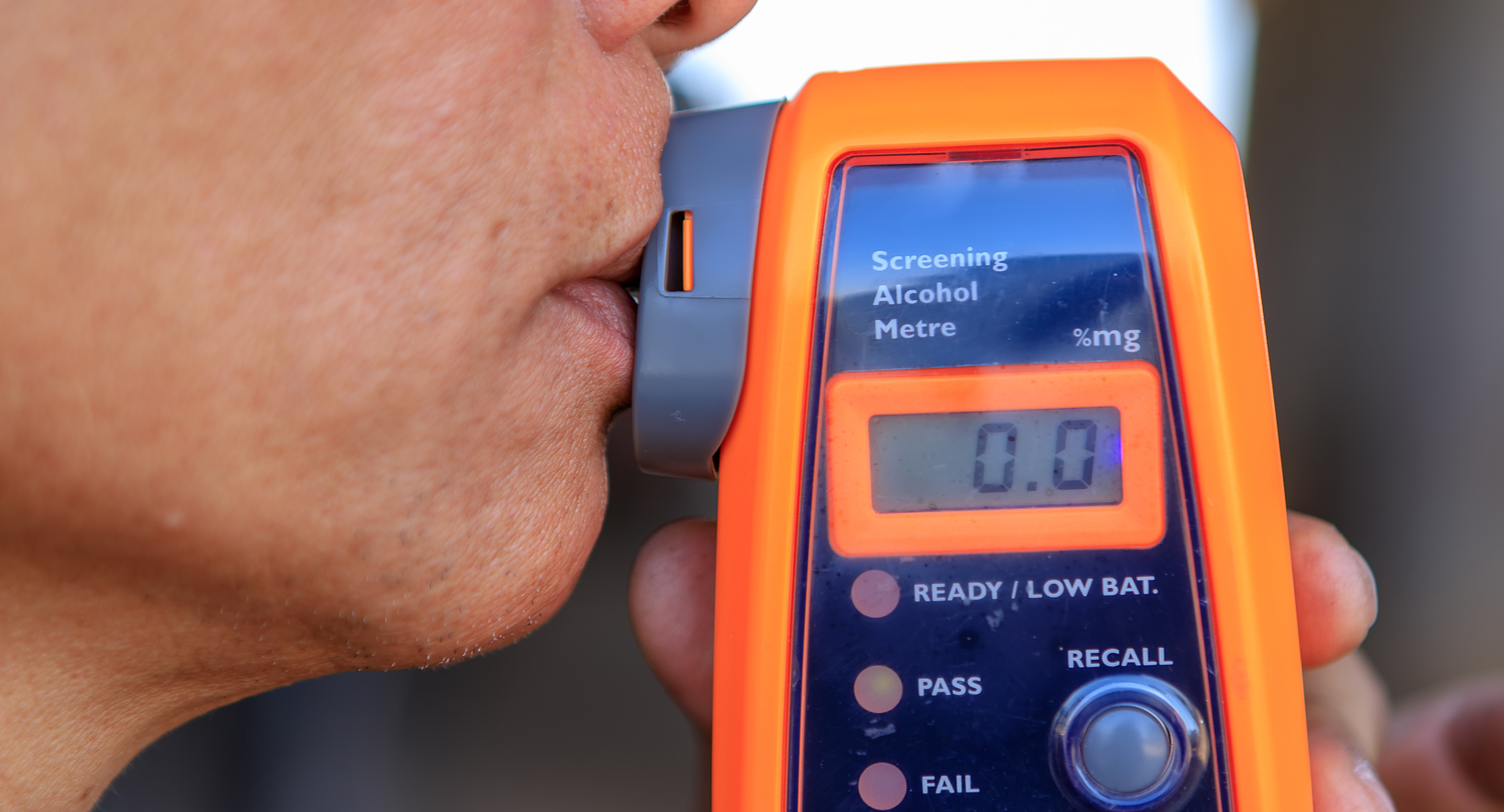The 2022 Crime in Texas Annual Report by the Texas Department of Public Safety shows a rising trend in drug-related offenses taking place in the State year after year.
Texas has some of the harshest drug laws in the country. Whether or not you are facing drug charges, our guide to navigating Texas drug laws will help you protect your civil rights and liberties.
What Are Controlled Substances in Texas?
Controlled substances in Texas include any drugs, medication, chemicals, or other substances whose manufacturing, distribution, possession, and use are government-regulated due to their perceived risk to public safety—including the substance’s addictive qualities and potential for abuse.
Controlled Substances in the Texas Health and Safety Code
The Texas Health and Safety Code chapter 481, also known as the Texas Controlled Substances Act, sets out substance abuse regulations and the different drug-related crimes, including their classifications.
Here’s the definition of “controlled substance” according to the Texas Controlled Substances Act:
“…a substance, including a drug, an adulterant, and a dilutant, listed in Schedules I to V or Penalty Group 1, 1-A, 1-B, 2, 2-A, 3, or 4…”
Drug crime is classified into different penalty groups depending on the type of offense committed and the drugs involved. We’ll further detail each penalty group and their relevant crime categorization further down in this guide.
For now, it’s essential to understand that the severity of drug-related charges depends on which penalty group the drug is classified in and the quantity of drugs involved.
Generally, drug-related crimes are categorized into State jail felonies, third-degree felonies, second-degree felonies, and first-degree felonies.
Drug Penalty Groups
The Texas Controlled Substances Act categorizes drugs into Penalty Groups 1 to 4 (PG-1, PG-1A, PG-1B, PG-2, PG-2A, PG-3, and PG-4). The most dangerous drugs—such as opiates—are found in the group with the lowest number. Below, we’ve listed the most common drugs in their corresponding group according to the Texas Health and Safety Code.
Penalty Group 1
The drugs in Penalty Group 1 are considered the most dangerous controlled substances. These drugs are highly addictive. Most of these substances have no legitimate use, though this group also includes painkillers such as codeine. The substances in this group include:
- Heroin
- Cocaine
- Crack
- Methamphetamine,
- Ketamine
- Opium
- Methadone
- Codeine
Penalty Group 1-A
Penalty Group 1-A is reserved for LSD, including any of its salts, isomers, and salts of isomers. LSD is sold by dose rather than weight, so it is placed in a separate group.
Penalty Group 1-B
The only substance in Penalty Group 1-B is Fentanyl, along with its isomers, esters, ethers, salts, and salts of isomers.
Penalty Group 2
The drugs in Penalty Group 2 are hallucinogenic substances that are still considered dangerous and addictive, though not to the same degree as the substances listed in Group 1. The drugs in Penalty Group 2 include:
- MDMA (Ecstasy/Molly)
- Synthetic Cathinones (“Bath Salts”)
- Adderall
- Mescaline
- Psilocybin (Mushrooms)
- PCP
- THC
Penalty Group 2-A
Penalty Group 2-A is reserved for synthetic marihuana such as Spice, K2, and other synthetic cannabinoids.
Penalty Group 3
Penalty Group 3 consists of many central nervous stimulants and depressants that have a potential for abuse, including:
- Alprazolam (Xanax)
- Diazepam (Valium)
- Lorazepam
- Ritalin
- Testosterone
Penalty Group 4
Penalty Group 4 consists of prescription medications that contain limited quantities of narcotic drugs, including:
- Codeine
- Opium
- Morphone
- Motofen
Influential Factors in Shaping Texas Drug Charges and Sentences
Several factors influence the level and severity of criminal charges you can face when it comes to drug-related offenses in Texas.
The first factor to consider is the type of offense. A drug possession offense will be treated differently to drug delivery, distribution, or manufacturing. If drugs, including marihuana, are sold to a minor, the charges can be enhanced further. Possession or delivery of drug paraphernalia is also a separate charge.
Other factors taken into consideration in drug-related crimes are the type of drugs (which penalty group they fall in) and the quantities involved.
Consequences of Drug Possession
The consequences of drug possession in Texas will depend on the type and quantity of the drugs involved. Typically, drug possession can be categorized anywhere between a Class C misdemeanor for the least serious offense and a first-degree felony for the most severe offense. Below, we list the possible crime categories for drug offenses—including their consequences.
Class C misdemeanor: A fine of up to $500.
Class B misdemeanor: Up to 180 days in jail and/or a fine of up to $2,000.
Class A misdemeanor: Up to one year in jail and/or a fine of up to $4,000.
State jail felony: 180 days to two years in jail and/or a fine of up to $10,000.
3rd-degree felony: 2 to 10 years imprisonment and/or a fine of up to $10,000.
2nd-degree felony: 2 to 20 years imprisonment and/or a fine of up to $10,000.
1st-degree felony: 5 to 99 years imprisonment and/or a fine of up to $50,000 and $250,000.
Penalties for Drug Possession
Penalty Group 1 AND Penalty Group 1-B
| Quantity in Grams | Offense Category | Criminal Punishment |
| Less than 1 gram | State jail felony | 180 days – 2 years in jail and/or a fine of up to $10,000 |
| 1 gram or more, but less than 4 grams | Third-degree felony | 2–10 years imprisonment and/or a fine of up to $10,000 |
| 4 grams or more, but less than 200 grams | Second-degree felony | 2–20 years imprisonment and/or a fine of up to $10,000 |
| 200 grams or more, but less than 400 grams | First-degree felony | 5–99 years imprisonment and a fine of up to $100,000 |
| 400 grams or more | First-degree, with enhanced penalties | 10–99 years or life imprisonment and a fine of up to $100,000 |
Penalty Group 1-A
| Quantity in Units | Offense Category | Criminal Punishment |
| Fewer than 20 units | State jail felony | 180 days – 2 years in jail and/or a fine of up to $10,000 |
| Between 20 and 79 units | Third-degree felony | 2–10 years imprisonment and/or a fine of up to $10,000 |
| 80 units or more, but less than 4,000 units | Second-degree felony | 2–20 years imprisonment and/or a fine of up to $10,000 |
| 4,000 units or more, but less than 8,000 units | First-degree felony | 5–99 years imprisonment and a fine of up to $100,000 |
| 8,000 units or more | First-degree, with enhanced penalties | 15–99 years or life imprisonment and a fine of up to $250,000 |
Penalty Group 2
| Quantity in Grams | Offense Category | Criminal Punishment |
| Less than 1 gram | State jail felony | 180 days – 2 years in jail and/or a fine of up to $10,000 |
| 1 gram or more, but less than 4 grams | Third-degree felony | 2–10 years imprisonment and/or a fine of up to $10,000 |
| 4 grams or more, but less than 400 grams | Second-degree felony | 2–20 years imprisonment and/or a fine of up to $10,000 |
| 400 grams or more | First-degree felony with enhanced penalties | 5–99 years imprisonment and a fine of up to $50,000 |
Penalty Group 2-A
| Quantity in Ounces | Offense Category | Criminal Punishment |
| Less than 2 ounces | Class B misdemeanor | Up to 180 days in jail and/or a fine of up to $2,000 |
| 2 ounces or more, but less than 4 ounces | Class A misdemeanor | Up to 1 year in jail and/or a fine of up to $4,000 |
| 4 ounces or more, but less than 5 pounds | State jail felony | 180 days to 2 years in jail and/or a fine of up to $10,000 |
| 5 pounds or more, but less than 50 pounds | Third-degree felony | 2–10 years imprisonment and/or a fine of up to $10,000 |
| 50 pounds or more, but less than 2,000 pounds | Second-degree felony | 2–20 years imprisonment and/or a fine of up to $10,000 |
| 2,000 pounds or more | First-degree felony with enhanced penalties | 5–99 years or life imprisonment and a fine of up to $50,000 |
Penalty Group 3
| Quantity in Grams (g) | Offense Category | Criminal Punishment |
| Less than 28 gram | Class A misdemeanor | Up to 1 year in jail and/or a fine of up to $4,000 |
| 28 grams or more, but less than 200 grams | Third-degree felony | 2–10 years imprisonment and/or a fine of up to $10,000 |
| 200 grams or more, but less than 400 grams | Second-degree felony | 2–20 years imprisonment and/or a fine of up to $10,000 |
| 400 grams or more | First-degree felony with enhanced penalties | 5–99 years imprisonment and a fine of up to $50,000 |
Penalty Group 4
| Quantity in Grams (g) | Offense Category | Criminal Punishment |
| Less than 28 grams | Class B misdemeanor | Up to 180 days in jail and/or a fine of up to $2,000 |
| 28 grams or more, but less than 200 grams | Third-degree felony | 2–10 years imprisonment and/or a fine of up to $10,000 |
| 200 grams or more, but less than 400 grams | Second-degree felony | 2–20 years imprisonment and/or a fine of up to $10,000 |
| 400 grams or more | First-degree felony with enhanced penalties | 5–99 years imprisonment and a fine of up to $50,000 |
Possession of Marihuana
Although cannabis is considered a controlled substance under Texas law, it doesn’t fall into a penalty group with other drugs.
The Texas Controlled Substances Act § 481.121 states, “…a person commits an offense if the person knowingly or intentionally possesses a usable quantity of marihuana.”
Depending on the amount of drugs involved, possession of marihuana falls into the following crime categories:
Less than 2 ounces: Class B misdemeanor
Between 2 and 4 ounces: Class A misdemeanor
Between 4 ounces and 5 pounds: State jail felony
Between 5 pounds and 50 pounds: Third-degree felony
Between 50 pounds and 2,000 pounds: Second-degree felony
More than 2,000 pounds: First-degree felony, punishable by life imprisonment, or between 5 and 99 years imprisonment, and a fine of up to $50,000.
Drug Production and Distribution Penalties
As with drug possession, the criminal charges and penalties for the production and distribution of controlled substances depend largely on the type of drug (its placement in the penalty groups) and the quantity involved in the offense.
Criminal drug production and distribution charges typically fall somewhere between state jail felonies and enhanced first-degree felonies. This means that the lowest penalties for this type of crime include between 180 days and two years in jail and a fine of up to $10,000, while the most severe charges can consist of penalties such as life imprisonment and up to $250,000 in fines.
Various aggravating factors can elevate the charges by one degree and further enhance the penalties. For example, § 481.1122 of the Texas Controlled Substances Act cites that if a child under the age of 18 is on the premises where drugs are being manufactured, not only does this result in enhanced penalties—including a larger fine and a longer prison sentence—but also the criminal charges being raised by one degree.
In addition to criminal penalties and consequences, if you manufacture, sell, or aid in the provision of drugs, you can be held liable for damages caused as a result of another person consuming or ingesting the drugs.
Collateral Consequences for Drug Possession
According to the Texas Department of Public Safety, a drug or controlled substance-related conviction will result in the suspension of your driver’s license for 180 days.
If you wish to get your license reinstated after 180 days, you will have to:
- Complete a 15-hour class in an authorized Drug Education Program
- Pay a $100 Reinstatement fee
- Obtain a Financial Responsibility Certificate (SR-22) from an authorized insurance company.
Drug-related convictions come with a host of collateral consequences. Aside from losing your driver’s license, you can expect higher insurance premiums for at least two years.
If you are convicted of a felony, your right to firearms is severely restricted. In addition, you lose your voting rights while serving your sentence, including during probation.
A criminal record that includes drug charges will create challenges in securing employment, student loans, college placement, and housing. Drug charges can irrevocably change a person’s life, so they should never be taken lightly.
Common Defenses Employed in Texas Drug Crime Legal Cases
When charged with drug possession in Texas, there are three elements that the State must prove, including:
Knowingly or intentionally: the prosecution must be able to prove that you were aware that the substance you were carrying was illegal.
Possessing: The Texas Controlled Substances Act defines possession as the “actual care, custody, control, or management” of a controlled substance. They need to prove that you were aware and in charge of where the drugs were, whether they were on your person, locked away somewhere, or even being transported (for you) by someone else.
Controlled substance: The state must prove that the substance in your possession was illegal. If you were prescribed the substance as medication, it would not be considered illegal.
The common defense strategies used against drug possession charges focus on disproving one or more of the above elements. For example:
- If you have an eligible medical condition, you may be entitled to use medical marihuana legally.
- If you have a valid prescription for a medicine (such as codeine), you can use this as evidence that you haven’t committed a crime.
- If you can show that the drugs didn’t belong to you—for example, if they were found in a communal or shared area—the prosecution must prove beyond reasonable doubt that the drugs belonged to you.
- For criminal charges to be valid, law enforcement officers must adhere to proper search and seizure laws. Police must have reasonable grounds for suspicion before carrying out a search. A skilled criminal defense lawyer can identify if the search and seizure was illegal. If it was, they may be able to file a motion to suppress or exclude the evidence from your trial.
- If the police acted in a way that lured you into committing a drug-related crime, entrapment could be a possible affirmative defense.
Every case is unique, and the above list does not include all possible strategies a skilled lawyer could use to help you. If you have been charged with a drug-related crime, the sooner you seek advice from a trusted lawyer, the better your chances of building a successful defense case.
The Best Strategy to Fight Drug Possession Charges in Texas
A conviction for a drug-related crime can have extreme consequences, including thousands of dollars in fines, several years of imprisonment, and a host of collateral consequences that can stay with you long after the sentence has passed.
If you, or someone you care about, are facing drug charges, you should get help from an experienced criminal defense attorney immediately. Here at Michael & Associates, we know how important it is to find the right lawyer for your unique case—it’s why we offer a free case review. Contact Michael & Associates today to book yours.




